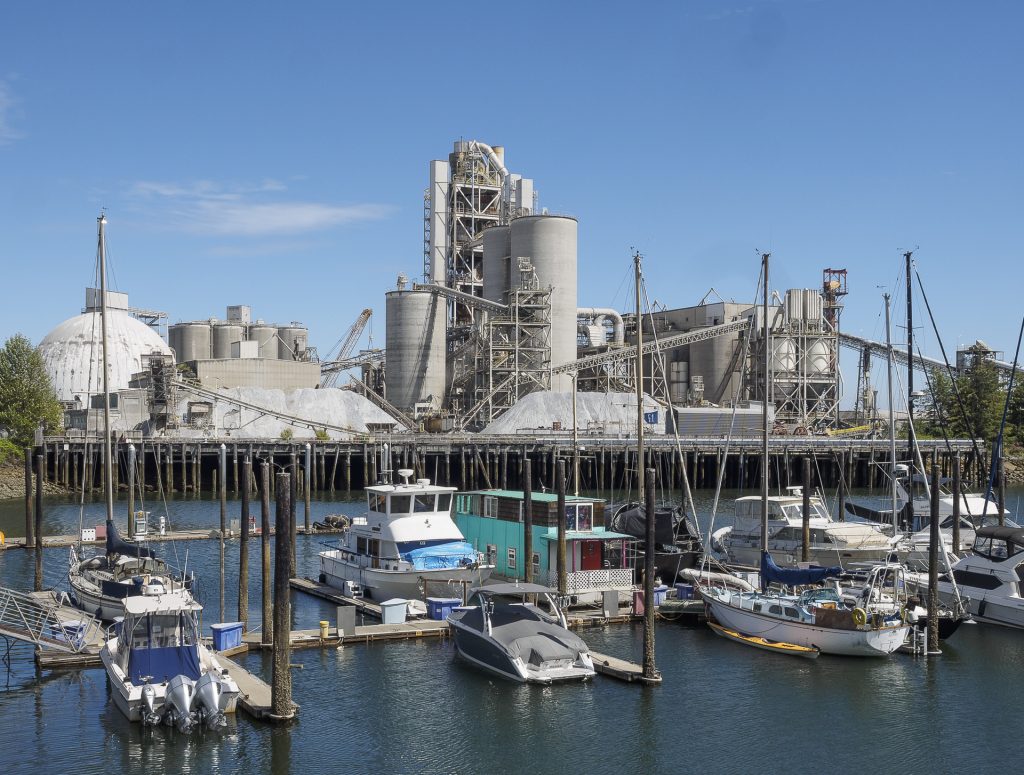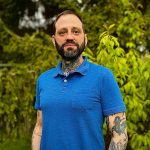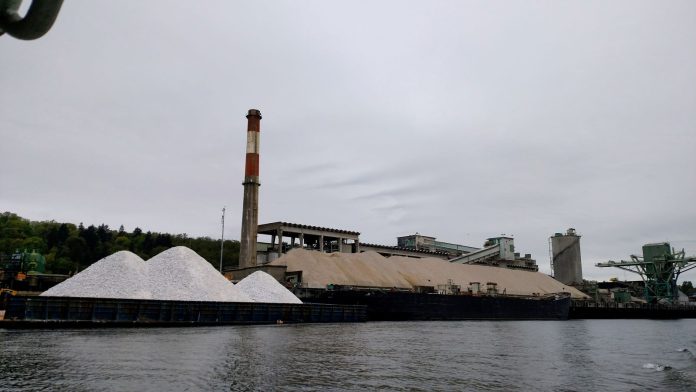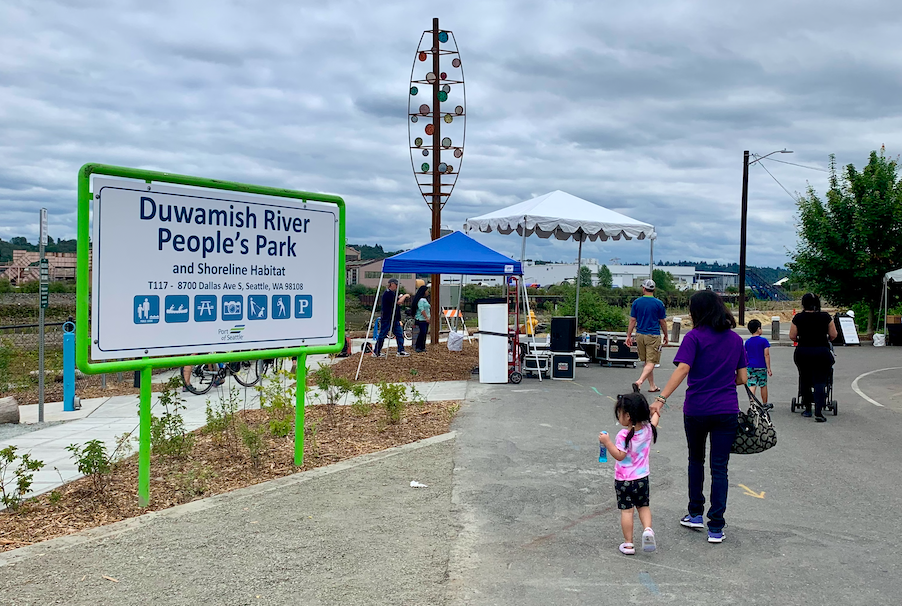The Duwamish River Valley hosts three freeways, two international airports, an international seaport, and a river so polluted it was declared a federal Superfund site, with over 300 industries lining the banks.
Seattle’s only majority people of color and immigrant neighborhoods are also the most vulnerable; with more families, lower incomes and higher asthma rates, all living and working by Seattle’s only river. As a near port community, black carbon (a super pollutant) and ultra-fine particulate matter are found in higher concentrations. King County International Airport continues to use leaded fuel for recreational aircraft which disperse dangerous airborne emissions. Toxic clouds of cadmium from Ardagh Glass and poisonous dust plumes from Seattle Iron and Metal, all occur regularly with little monitoring, oversight, or consequence for polluters (DVYC Moss Study).
On top of it all, raging wildfires send soot and ash raining down reliably in late-summer smoke season, delivering the worst AQI scores in the world to the Puget Sound for days at a time.
Washington State needs a new approach to air pollution that centers environmental justice, prioritizes human health, and addresses the cumulative impacts of air pollution in communities using disaggregated data from a robust, comprehensive regional air quality monitoring network for environmental justice communities. People of color are 3.6 times more likely than white people to live in counties that experience poor air quality, as reported by the American Lung Association. Given Seattle’s history of redlining and 13-year gap in life expectancy between South Park, Georgetown and Laurelhurst residents, this is a glaring reality.

Many of these impacts are exacerbated by the impacts of climate change, and relative mental health also takes a toll. Policymakers and regulatory bodies should create and enforce stringent reduction goals and aggressive state level standards for harmful air pollutants to close the gaps responsible for health disparities faced by communities living in the Duwamish Valley.
The differences in health outcomes are the result of historic and persistent environmental injustice and institutional racism that state and local legislators and policymakers have attempted to undo with optimistically titled initiatives like the King County Equity and Social Justice Strategic Plan and the Healthy Environment For All Act. Regrettably, these policies and rhetorical statements of solidarity have not delivered on the promises of health equity and protection. Some examples include:
- County: King County Council declared racism a public health crisis yet recently approved a new 20-year lease in the valley for Ardagh Glass with almost no community engagement and over serious objections from affected community members in the single public comment hearing offered before the vote to approve. KCIA has begun the process of expansion while community-backed ordinance 2022-0011 opposing the airport’s master plan, including the fuel farm expansion, has languished in committee at King County Council for over a year without a vote.
- State: While the Puget Sound Clean Air Agency (PSCAA) is the regional authority for air quality, created by the Washington State Clean Air Act, it remains unclear how the HEAL ACT applies to the PSCAA. The Climate Commitment Act regulates carbon using a market-based “cap and trade” tactic to address climate change specifically, and largely overlooks airborne toxics.
Federal: NAAQS policy is the latest update that is falling short of protective measures with no change for the 24-hour particulate matter (PM) standard for non-attainment and attainment areas. No level of PM 2.5 and toxics is healthy for children or adults.
Washington needs a stringent cumulative impacts policy and regulations that centers health and sets a new standard for emission reduction, both stationary and mobile, emission control technologies, indirect source rules, and a mandate authorizing environmental justice criteria in permitting.
Stronger regulations and actionable implementation is key for our civil rights. For example, the State of Oregon regulates air toxics by evaluating emissions based on the danger to human health they pose when considered with the total pollution present at a specific location by setting limits on the risk to nearby residents, or risk action levels.
Environmental justice communities in Washington need a cumulative impact policy that includes air toxics that match the reality in which we are living like Oregon has implemented. It’s time that Washington State, King County and the City of Seattle live up to their own stated values and start walking all their environmental justice talk so people in the Duwamish Valley may finally take a breath of healthy air.

Christian Poulsen (Guest Contributor)
Christian Poulsen is Clean Air Program Manager of the Duwamish River Community Coalition. South Park was the first neighborhood he called home.Raised by a single mother who worked at Smith-Berger Marine on the Lower Duwamish Waterway, Christian is a first-generation college graduate with a bachelor’s degree in Public Affairs from Seattle University.His two sons attend Concord Elementary. He's a member of the King County International Airport Community Coalition.Christian is excited to bring his passion for community engagement to advocate for effective, equitable, and environmentally sound policy that honors the community voices and holds power accountable to the people living in the Duwamish River Valley.


